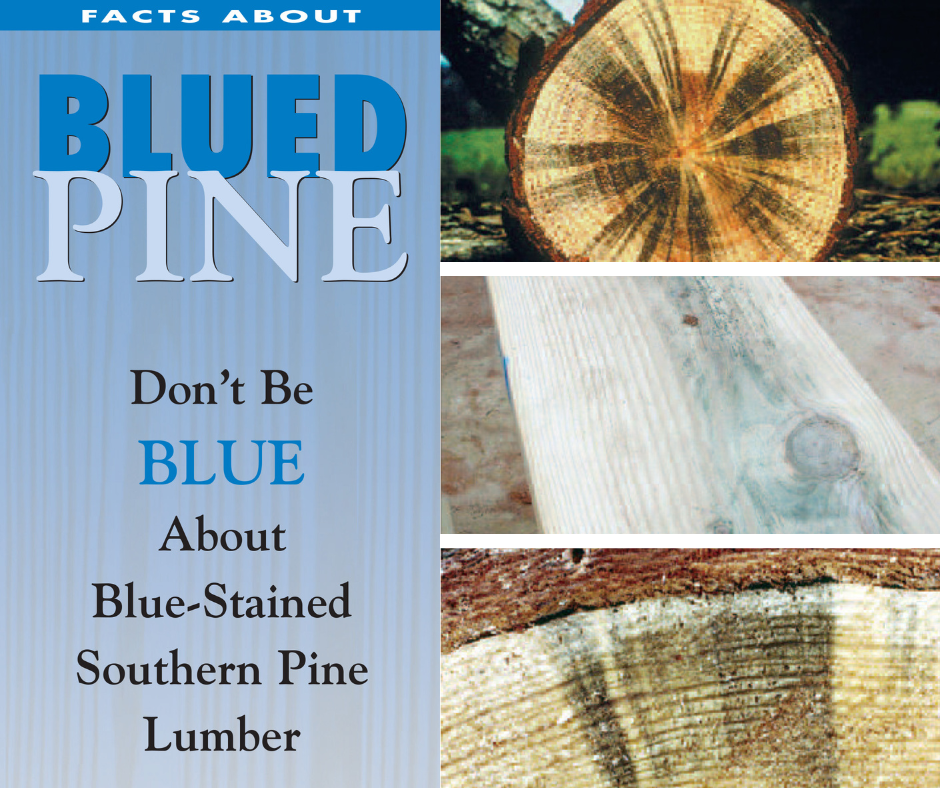Blue stain is a common cause for the discoloration of lumber. Certain dark colored microscopic fungi cause a bluish or grayish discoloration in the sapwood of the tree.
However, not all blue stains are blue. Common stain shades can be blue to bluish black or gray to brown. Sometimes, the stain coloration in lumber may appear as red, yellow, orange, or even purple.
Here are a few common questions about blue-stained lumber:
What is it? blue stain or mold?
It’s not mold. However, for a simple test to determine whether a piece of lumber is blue stained or has mold, lightly rub the affected surface of the wood. Mold grows on the surface and can be brushed off or smeared, whereas blue stain penetrates deep into the wood and cannot be removed.
Does blue stain affect strength properties?
Blue stain has no effect on the performance and strength of lumber. Structural lumber is not downgraded because of the presence of blue stain and should not be labeled inferior lumber.
Where can blue-stained lumber be used?
Because it does not detract from the strength properties of dimension lumber, blue-stained lumber can be used for exactly the same purpose as nonstained lumber. Just be certain the lumber has an American Lumber Standard Committee (ALSC) grade mark, which includes the grade, moisture content, inspection service, species, and mill identification number.
What about health and safety concerns?
Blue stain poses no health risk, and blue-stained lumber is safe to handle. The same safety rules for using non-stained lumber apply to blue-stained lumber:
- Wear eye protection and a dust mask when sawing or machining lumber.
- Avoid prolonged inhalation of sawdust.
- When the work is completed, wash areas of skin contact thoroughly before eating or drinking.
- Wash clothing that accumulates sawdust separately from other household clothing and before reuse.
Does blue stain cause decay?
It is not a decay fungi and lives on the nutrients stored in the cells of the wood, not on the cellulose fibers of the tree itself.
When might I see more stained lumber?
A larger proportion of blue-stained lumber is likely to enter Southern Pine lumber markets after natural disasters that damage forest resources. Timber salvage operations following natural disasters are more challenging and typically affect a large geographic area. Consequently, it may take longer for trees to be brought to the sawmill for processing into lumber. Downed timber may begin to show signs of blue staining in as early as five days in warm, humid weather. This explains why more natural discoloration occurs in lumber manufactured from salvaged timber following major hurricanes.
Can stained lumber be pressure treated?
Blue stain fungi have no effect on the treatability of Southern Pine lumber and stained lumber may be treated to guard against decay and termites.
